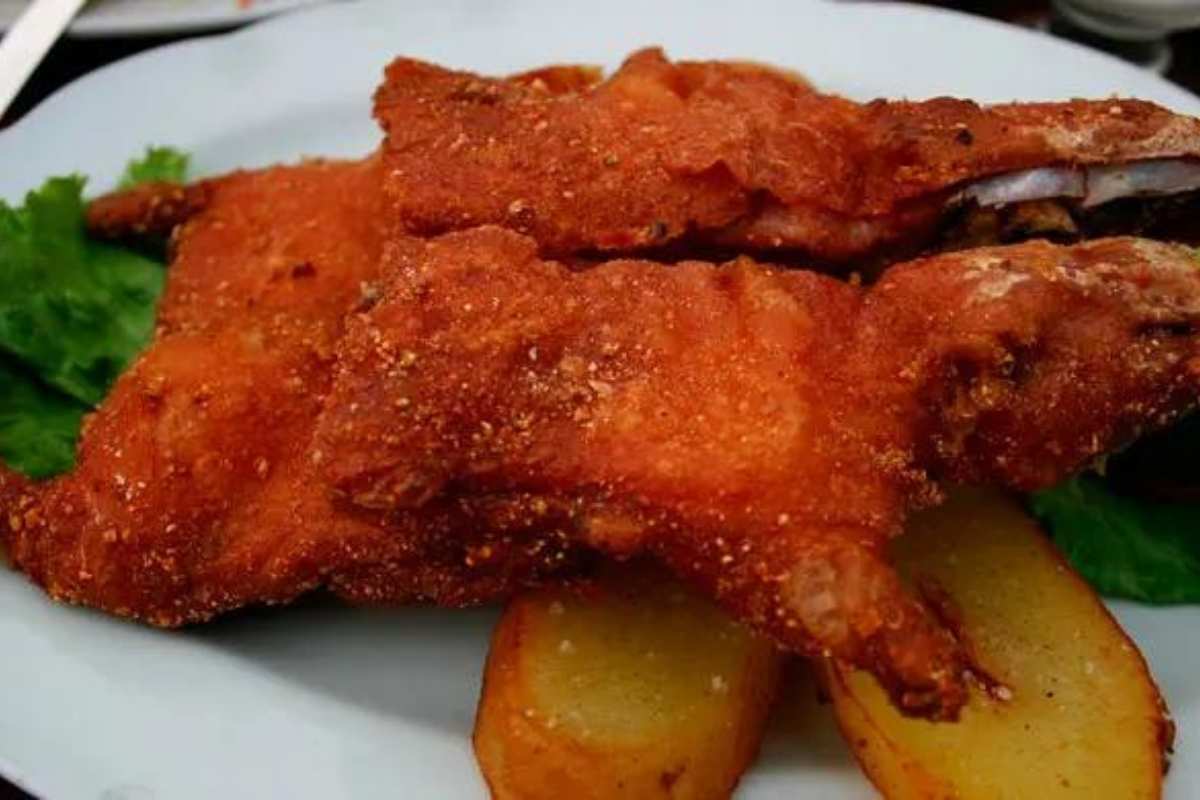Cuy Chactado (Peruvian Guinea Pig Recipe)

Guinee pigs, known locally as cuy, are a popular source of protein in many South American countries. In Peru, an estimated number of 65 million Guinee pigs are eaten every year.
Cuy Chactado consists of frying an entire cuy with abundant vegetable oil in a special stone oven until it becomes crunchy and can be easily broken up. It is then served with a side of potatoes and salad.
You can break up pieces of the cuy to combine it with the salad or the potatoes for maximum enjoyment of the dish.

Cuy Chactado (Peruvian Guinea Pig Recipe)
Ingredients
- 1 whole Guinea pig or "Cuy" (eviscerated)
- 1 fresh lemon juice
- 2 tsp ground garlic
- 200 g cornmeal
- 3 cups vegetalbe oil
- 1 garlic cloves minced
- ½ red onion chopped
- 2 tbsp ground Aji Panca
- 2 tsp fresh oregano leaves
- ½ sweet potatoes cut into pieces
- 12 cocktail potatoes cut in halves
- 1 cup vegetable broth
- 2 tbsp roasted peanuts
- salt
Instructions
How to Cook Cuy Chactado
- Wash the guinea pig with plenty of water, dry it carefully with absorbent paper, and let it sit at room temperature for approximately two hours. Then cut it into four sections and season them with lemon juice, minced garlic, and salt.
- Cover the guinea pig sections with cornmeal, then heat the 3 cups of vegetable oil in a pan and fry them on both sides for about 7 minutes, or until they’re crispy.
- Heat the remaining oil in a pot over a medium heat and brown the minced garlic and onion for about four minutes. Then add the aji panca and let it cook for another five minutes.
- Now, add a teaspoon of oregano, the sweet potato slices, and the cocktail potatoes. Then season it with a little salt and pour in the vegetable broth. Let it all cook for about 10 minutes or until the sweet potatoes and cocktail potatoes are cooked.
- Finally, add the remaining oregano and peanuts, remove it from the heat, and serve it alongside the fried guinea pig pieces.
Notes
If you love Peruvian food, check out our article on the top 15 Peruvian foods (recipes and photos included).
Tried this recipe?Let us know how it was!
Photo credit: https://www.iperu.org/

